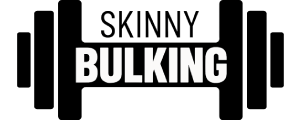Embarking on a fitness journey can be an exciting, yet daunting task. You’ve made the decision to prioritize your health, and now it’s time to choose the right diet plan to fuel your workouts. The food you consume plays a significant role in your fitness goals, so it’s essential to find a diet plan that aligns with your workout regimen. With numerous diet plans available, it can be overwhelming to pick one that works best for you. In this blog post, we’ll walk you through five effective diet plans that will complement your workouts and help you achieve your fitness goals. We will explore the benefits of each diet plan and provide tips to help you get started. Whether you’re looking to build muscle, burn fat, or simply maintain a healthy lifestyle, there’s a diet plan out there that will fit your needs. So, let’s dive in and discover which diet plan is right for you!

Image: unsplash
1. Introduction to the importance of diet in a fitness journey
When embarking on a fitness journey, many people put a lot of focus on the exercise aspect of it. However, it’s important to remember that diet plays a crucial role in achieving your fitness goals. No matter how hard you work out, if you’re not fueling your body with the right nutrients, you’ll find it difficult to make progress.
A healthy, balanced diet can help you build muscle, increase your endurance, and improve your overall health. It’s not just about cutting calories or avoiding certain foods – it’s about finding a way of eating that works for you and supports your fitness goals.
There are many different diet plans out there, and it can be overwhelming to know where to start. Some popular options include the ketogenic diet, intermittent fasting, and the Mediterranean diet. It’s important to do your research and consult with a healthcare professional before starting any new diet plan.
Remember, the goal of a diet plan is not just to help you lose weight or look a certain way. It’s about nourishing your body with the right nutrients so that you can achieve your fitness goals and feel your best. So whether you’re looking to build muscle, improve your endurance, or simply feel healthier, finding the right diet plan can be a game-changer in your fitness journey.
2. The benefits of combining diet and exercise
Combining a healthy diet with exercise can have numerous benefits for your body and overall health. While exercise is important for building muscle, burning calories, and improving cardiovascular health, diet plays a crucial role in fueling your body and providing it with the necessary nutrients to support your fitness goals.
By following a balanced diet that consists of whole foods, lean protein, healthy fats, and complex carbohydrates, you can enhance your workout performance and maximize the results of your efforts. Eating a diet that is high in protein, for example, can help repair and build muscle tissue, while incorporating healthy fats like avocado and nuts can provide your body with sustained energy to power through your workouts.
Furthermore, a healthy diet can also help improve your mental clarity and focus, which can be especially important during intense exercise sessions. By fueling your body with the right foods, you can feel more alert, energized, and motivated to push yourself to new limits.
Overall, combining a healthy diet with regular exercise can help you achieve your fitness goals faster and more effectively, while also improving your overall health and well-being. So, whether you’re looking to build muscle, lose weight, or simply improve your fitness level, be sure to prioritize both aspects of your health and fuel your BodyFit journey with a balanced diet and consistent exercise routine.
3. The impact of good nutrition on workout results
It’s no secret that good nutrition plays a significant role in the success of your workout regimen. Without proper fuel, your body won’t be able to perform at its best during exercise. When you workout, your body needs energy to power through the routine, and this energy comes from the food you eat. Eating a balanced diet rich in nutrients will allow you to perform better during your workouts, and in turn, see better results.
For example, consuming carbohydrates before a workout will help provide your body with the energy it needs to get through the session. Eating protein afterward will help your muscles recover and repair themselves, leading to stronger muscles and a better physique.
In addition to enhancing performance and muscle growth, good nutrition also helps with weight loss. By consuming a balanced diet, you can ensure that you are fueling your body with the right nutrients, which will help you shed unwanted pounds and maintain a healthy weight.
Overall, incorporating good nutrition into your workout routine is essential for achieving your fitness goals. Whether you follow a specific diet plan or simply focus on consuming a balanced diet, the impact of good nutrition on your workout results cannot be overstated.
4. Different types of diet plans and their benefits
There are many different types of diet plans available, each with its own set of benefits. One popular option is the ketogenic diet, which is high in fat, moderate in protein, and low in carbohydrates. This diet is known to help with weight loss, improved insulin sensitivity, and increased energy levels. Another option is the paleo diet, which is based on the idea of eating like our ancestors did. This diet is focused on whole, unprocessed foods and avoids grains, dairy, and refined sugars. It has been shown to improve gut health, reduce inflammation, and support healthy weight loss.
The Mediterranean diet is another popular choice, which is based on the traditional foods of countries bordering the Mediterranean Sea. This diet is rich in fruits, vegetables, whole grains, and healthy fats like olive oil and nuts. It has been shown to reduce the risk of heart disease, improve cognitive function, and support healthy aging. The flexitarian diet is a more flexible approach, which focuses on plant-based foods while still allowing for occasional meat consumption. This diet has been shown to improve heart health, reduce the risk of chronic diseases, and support healthy weight management.
Finally, there is the vegan diet, which is focused on plant-based foods and excludes all animal products. This diet has been linked to lower rates of heart disease, improved kidney function, and reduced risk of certain types of cancer. By understanding the different types of diet plans available and their benefits, you can choose the one that best compliments your fitness goals and supports your overall health and wellness.
5. The 5 effective diet plans to complement your workouts:
When it comes to fueling your BodyFit journey, diet plays a crucial role in achieving your fitness goals. No matter how hard you train, if your diet is not complementing your workouts, you’re not going to see the results you desire. Here are five effective diet plans to complement your workouts:
1. Ketogenic Diet: This low-carb, high-fat diet plan is great for those looking to lose weight and build lean muscle mass. By limiting your carbohydrate intake, your body enters into a state of ketosis where it burns fat for fuel instead of carbohydrates.
2. Paleo Diet: This diet plan focuses on whole, unprocessed foods that our ancestors would have eaten. This includes lean proteins, fruits, vegetables, nuts, and seeds. By eliminating processed foods and grains, you’ll see an improvement in your overall health and fitness.
3. Mediterranean Diet: This diet plan is based on the traditional eating habits of people in the Mediterranean region. It includes plenty of whole grains, fruits, vegetables, fish, and healthy fats like olive oil. This diet plan is great for heart health and weight management.
4. Plant-Based Diet: This diet plan focuses on eating whole, plant-based foods such as fruits, vegetables, legumes, nuts, and seeds. It’s a great way to increase your micronutrient intake and improve your overall health.
5. Flexible Dieting: This diet plan is all about balance and moderation. It allows you to eat a variety of foods while still achieving your fitness goals. By tracking your macros and incorporating your favorite foods into your daily diet, you’ll stay motivated and on track.
No matter which diet plan you choose, remember to fuel your body with the right nutrients to support your workouts and achieve your BodyFit goals.
a. The Ketogenic Diet

Image: unsplash
The Ketogenic diet has been growing in popularity in recent years and is a great option for those looking to fuel their BodyFit journey. The diet is based on consuming high amounts of healthy fats while significantly reducing carbohydrates and moderating protein intake. By doing this, the body enters a state of ketosis where it burns fat for energy instead of glucose from carbohydrates.
The ketogenic diet has been linked to improved weight loss, increased energy levels, and improved mental clarity. In addition, many people who follow the diet report feeling less hungry and more satisfied after meals due to the high-fat content of the foods they consume.
Foods that are allowed on the ketogenic diet include healthy fats such as avocados, nuts, and seeds, as well as non-starchy vegetables like leafy greens, broccoli, and cauliflower. Foods to avoid include grains, sugar, and most fruits.
While the ketogenic diet can be highly effective, it’s important to note that it may not be suitable for everyone. It’s always best to consult with a healthcare professional before starting any new diet plan.
b. The Paleo Diet
The Paleo Diet is a popular diet plan that follows the eating habits of our Paleolithic ancestors. The idea behind this diet is to consume whole, unprocessed foods that our bodies are genetically programmed to digest.
The diet mainly consists of lean meats, fish, fruits, vegetables, nuts, and seeds. Foods like grains, dairy, and processed foods are not allowed in the Paleo Diet.
One of the main benefits of the Paleo Diet is that it eliminates foods that are high in refined sugars, unhealthy fats, and additives. This can lead to weight loss, improved digestion, and increased energy levels.
Furthermore, the Paleo Diet is rich in protein which is important for muscle recovery and growth after workouts. The diet is also anti-inflammatory which can reduce muscle soreness and speed up recovery time.
However, it is important to note that the Paleo Diet may not be suitable for everyone. It can be restrictive and may not provide enough of certain nutrients such as calcium and vitamin D. It is important to consult a healthcare professional before adopting any new diet plan.
Overall, the Paleo Diet can be a great option for those looking to eat whole, unprocessed foods and improve their overall health.
c. The Mediterranean Diet
The Mediterranean diet is a well-balanced and sustainable approach to healthy eating that is inspired by the traditional diets of Mediterranean countries like Greece, Italy, and Spain. It is known for its emphasis on fresh fruits and vegetables, whole grains, lean proteins, and healthy fats like olive oil and nuts. This diet plan is rich in antioxidants, fiber, vitamins, and minerals that can help fuel your BodyFit journey and support your fitness goals.
One of the key components of the Mediterranean diet is the consumption of fish and seafood. These are excellent sources of protein and omega-3 fatty acids that can help reduce inflammation, promote heart health, and support muscle growth and recovery. In addition, this diet plan allows for moderate consumption of red wine, which is rich in antioxidants and has been linked to numerous health benefits.
Another important aspect of the Mediterranean diet is the use of herbs and spices to add flavor to meals instead of relying on salt and unhealthy fats. This can help reduce the risk of high blood pressure and other chronic health conditions.
Overall, the Mediterranean diet is a great option for those looking for a sustainable and enjoyable way to fuel their BodyFit journey. It is easy to follow, delicious, and can help you reach your fitness goals while supporting your overall health and wellbeing.
d. The Vegan Diet
The Vegan Diet is a popular plant-based diet that excludes all animal products. This means no meat, fish, eggs, dairy, or any other animal-derived products. The diet is based on fruits, vegetables, whole grains, legumes, nuts, and seeds. Many people choose to follow a vegan diet not only for health reasons but also for ethical and environmental reasons.
If you are considering the Vegan Diet as a complement to your BodyFit journey, it’s important to ensure that you are getting all the necessary nutrients. Protein is a common concern for vegans, but there are plenty of plant-based sources of protein such as beans, lentils, tofu, and tempeh. It’s also important to ensure that you are getting enough vitamins and minerals, particularly vitamin B12 which is not found naturally in plant-based foods. You may need to take a supplement to ensure that you are getting enough nutrients.
The Vegan Diet can be a great option for those who want to focus on whole, plant-based foods. Many athletes and bodybuilders follow a vegan diet and have reported great success in building muscle and improving their overall health. With careful planning and consideration, the Vegan Diet can be a great complement to your BodyFit journey.
e. Intermittent Fasting
Intermittent fasting has become a popular diet plan in recent years, especially among fitness enthusiasts. The idea behind this diet plan is to alternate between periods of eating and fasting, with the aim of reducing calorie intake and improving overall health.
There are different ways to approach intermittent fasting, but one of the most popular methods is the 16/8 plan. This involves fasting for 16 hours and eating within an 8-hour window each day. For example, you may choose to have your first meal of the day at noon and your last meal at 8 pm, then fast until noon the following day.
Intermittent fasting has been found to have various health benefits, such as reducing insulin resistance, promoting cellular repair, and improving brain function. Additionally, it can help with weight loss by reducing calorie intake and increasing metabolism.
However, it’s important to note that intermittent fasting may not be suitable for everyone, especially those with certain medical conditions. It’s always best to consult with a healthcare professional before starting any new diet plan.
If you do choose to try intermittent fasting, it’s important to make sure you’re still getting all the nutrients your body needs. Eating nutrient-dense foods during your eating window and drinking plenty of water is key to making sure you’re fueling your body properly during this diet plan.
6. How to choose the best diet plan to complement your workouts
When it comes to choosing the best diet plan to complement your workouts, there are a few things you should consider. First, think about your fitness goals. Do you want to build muscle, lose weight, or improve your overall health? Different diet plans will cater to different goals, so it’s important to choose one that aligns with what you’re trying to achieve.
Next, consider your lifestyle and preferences. Are you vegetarian, vegan, or have any food allergies? Some diets may be more restrictive than others, so it’s important to choose one that fits your lifestyle and preferences. Also, consider your schedule and how much time you have to meal prep and cook.
It’s important to choose a diet plan that is sustainable and realistic. Fad diets may promise quick results, but they are often not sustainable in the long term. Look for a diet plan that emphasizes whole, nutrient-dense foods and allows for flexibility and enjoyment of food.
Lastly, consult with a nutritionist or registered dietitian to ensure you’re getting all the necessary nutrients and vitamins to fuel your workouts and achieve your fitness goals. They can also provide guidance on portion sizes and meal timing to optimize your performance and recovery.
7. Tips for sticking to a diet plan
Sticking to a diet plan can be challenging, especially if you are used to certain eating habits. However, there are some tips that can help you stay on track and achieve your goals.
Firstly, it’s important to plan your meals in advance. This can help you avoid making impulsive food choices when you are hungry and in a rush. You can either plan your meals for the week or for the next day. This can also help you ensure that you are getting all the necessary nutrients in your diet.
Another tip is to find healthy substitutes for your favorite unhealthy foods. For example, if you love pizza, you can try making a healthier version at home using a whole wheat crust and lots of veggies. This can help you satisfy your cravings without straying from your diet plan.
It’s also important to stay hydrated throughout the day. Drinking water can help you feel fuller and avoid overeating. You can also try drinking herbal tea or infused water to add some flavor to your drinks.
Having a support system can also make a big difference. You can join a support group or find a workout buddy who is also following a diet plan. This can help you stay motivated and accountable.
Finally, it’s important to remember that it’s okay to indulge occasionally. If you have a favorite dessert or snack, you don’t have to cut it out completely. You can allow yourself a small portion once in a while to avoid feeling deprived and increase the likelihood of sticking to your diet plan long-term.
8. The importance of tracking progress and results

Image: unsplash
When it comes to achieving your fitness goals, tracking progress and results is extremely important. Without it, you won’t know if what you’re doing is working or not. By tracking your progress, you’ll be able to see what’s working and what’s not, and make adjustments to your diet or workout routine accordingly.
There are several ways to track your progress, such as taking measurements, weighing yourself, taking progress photos, or using fitness apps. It’s important to choose a method that works best for you and stick with it.
Tracking progress not only helps you stay motivated, but it can also be a great source of accountability. When you see progress, it reinforces the idea that what you’re doing is worth it, which can motivate you to keep going. On the other hand, if you’re not seeing results, it can be a wake-up call to make changes to your routine or diet.
Remember that progress is not always linear. There may be ups and downs, but overall, tracking progress will help you see the bigger picture and stay on track towards your goals. So, make sure to take the time to track your progress and celebrate your successes along the way.
9. The role of a nutritionist in creating a custom diet plan
When it comes to creating a custom diet plan, a nutritionist can play a vital role. A nutritionist is trained to understand the complexities of the human body and its nutritional needs. They can help you tailor your diet plan to your specific fitness goals, taking into account your current health, fitness level, and any dietary restrictions you may have.
Working with a nutritionist can help you understand how to balance your macronutrients (carbohydrates, proteins, and fats) and micronutrients (vitamins and minerals) to ensure that you’re fueling your body with the right nutrients for optimal performance and recovery.
A nutritionist can also help you create a plan that works with your lifestyle, making it easier for you to stick to your diet plan and achieve your fitness goals. They can provide you with guidance and support along the way, helping you to overcome any challenges you may face.
If you’re serious about your BodyFit journey, consider working with a nutritionist to create a custom diet plan. It may be the missing piece of the puzzle that helps you achieve the results you’re looking for.
Conclusion
In conclusion, incorporating a well-balanced diet plan into your BodyFit journey is crucial to achieving your fitness goals. It’s important to remember that every body is different, and what works for one person might not work for another. Therefore, it’s essential to experiment with different diet plans and find what works best for your body type and personal preferences.
It’s also important to keep in mind that while diet plans can be effective, they’re only one piece of the puzzle. Consistency is key when it comes to achieving your fitness goals. Sticking to a regular workout routine and making healthy choices consistently will help you to see progress over time.
Lastly, it’s important to listen to your body and give it the fuel it needs to perform at its best. Don’t deprive yourself of essential nutrients or cut out entire food groups without consulting a healthcare professional. Remember that healthy eating should be a lifestyle, not a short-term fix.
So, whether you choose to follow a low-carb diet, a plant-based diet, or any of the other effective diet plans we’ve discussed, remember to stay consistent, listen to your body, and fuel your BodyFit journey with healthy and balanced meals.







Leave a Reply